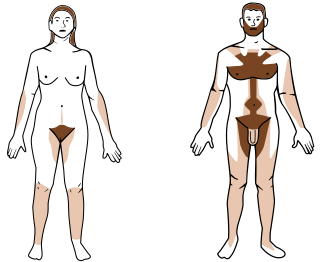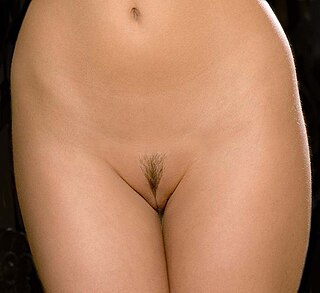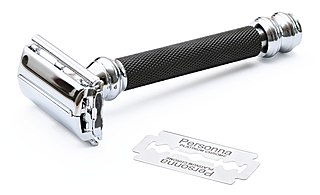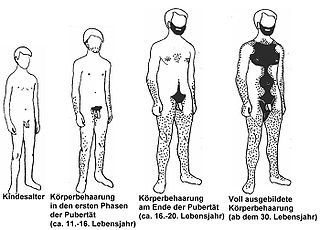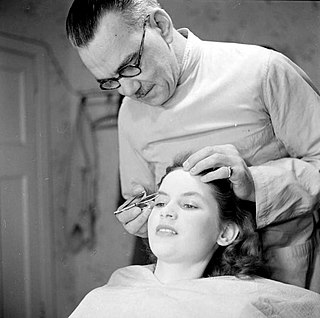Underarm hair history

Developments in three industries enabled a heavy and effective advertising campaign beginning in 1908 to show American people that female underarm hair was offensive. These industries were the male hair removal products industry, which had become recently commercially successful and sought to expand its market; the women's clothing fashion industry, which began producing sheer and sleeveless evening gowns and rising hemlines; and the mass production of women's magazines. [1]
The market for female hair removal products
Men had already been shaving at barber's shops and later at home when a men's disposable "safety-razor" was introduced for home use in 1903. Quickly successful, Gillette sold 90,000 razor sets the next year. A female market for hair removal products, on the other hand, did not yet exist in the United States; that market had to be created. [1] According to Hansen, a researcher on the topic, "The practice of removing hair from the underarms and legs was practically unheard of." She goes on, "In fact, hair removal was such a novel concept when it was first introduced that companies had to persuade women of the benefits of hair removal, and demonstrate how to practice it." [1] The first razor marketed specifically to women came to market in 1915 from Gillette. From then to the 1930s, Gillette and dozens of other hair removal companies used the changes in women's clothing fashions as justification for the sudden need to remove underarm hair, and later leg hair. [1] The message was distributed primarily and heavily through the newly born, popular and influential women's magazines. [1]
Rise of women's magazines
The Delineator , first published in 1873, was the first women's magazine. Five others appeared soon after, comprising what became known as the "Big Six": Ladies' Home Journal, Woman's Home Companion, Good Housekeeping, McCall's , and Pictorial Review . [6] The publisher of the Ladies Home Journal, Cyrus Curtis, told advertisers that the purpose of the magazine was to give manufacturers a way to market their products to women, not for the benefit of American women. [6] The goal of advertisers was to not only fulfill women's needs; it was to create new ones. [6] The amount of advertising for toiletries and beauty services were second only to advertisements for food. [7] Estimated advertising spending between 1890 and 1914 grew from $190 million to $682 million. [6]
Improvements in printing technologies, railroad transportation and postal services made mass circulation of these magazines possible. [1] The population of women increased by two thirds between 1890 and 1920 and the literacy rate jumped to 94% in 1920. Both of these demographic shifts increased the audience for women's magazines.
The most popular women's magazine, Ladies' Home Journal, had 25,000 readers by the end of its first year. The reach of these women's magazines meant they were extraordinarily influential. [6]
The Great Underarm Campaign
Advertisements suggesting that women remove hair under the arm, and explaining how and why to do so, were published as early as 1908, [1] and ran more steadily beginning in 1914. [8] The 1915 advertisement on the right ran in Harper's Bazaar for a depilatory powder called X Bazin is typical of ads during this time in that it defines why underarm hair removal is necessary. It also shows an image of a woman in a sleeveless gown with her arm up and the caption "Summer Dress and Modern Dancing combine to make necessary the removal of objectionable hair." [1]
Advertisers were careful to use wording they felt would be more palatable to their audience, for example "smoothing" instead of "shaving" [9] and "limbs" instead of "legs". [10] The educational campaign on the benefits of and methods of hair removal persisted into the ads of the early 1920s and even continue today. [1] Underarm hair in these ads was called "objectionable", "unwelcome", "embarrassing", "unsightly" and "unclean"; and its removal indicated a person who had "charm" and "the last touch of ‘feminine loveliness'" and was "modest", "dainty and perfectly groomed"; the practice was for "refined women" and "women of fashion." [1]
Hair removal product manufacturers initially focused their marketing on the upper class. Beginning in 1934, a similar type of advertising showed up in the middle-class Ladies' Home Journal that had been running in upper class Harper's Bazaar for the past 15 years. [1]



